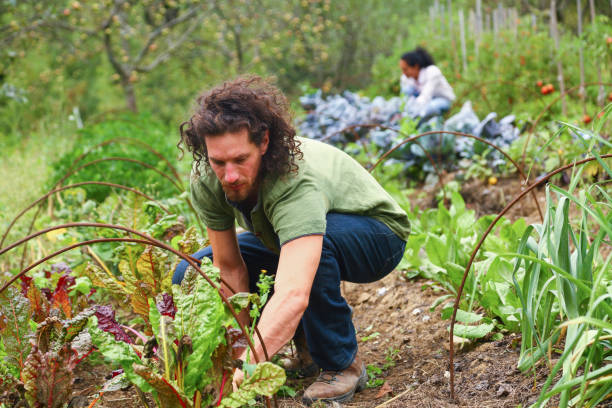The Untapped Potential of Snail Farming
In the vast realm of agriculture and animal husbandry, one unexpected contender is slowly but steadily making its mark: snail farming. This often-overlooked practice has been gaining traction in recent years, offering a sustainable and profitable alternative to traditional livestock farming. From gourmet cuisine to cosmetic applications, snails are proving to be more than just garden pests.

A Glimpse into Snail Farming History
Snail consumption dates back to prehistoric times, with evidence of snail shells found in archaeological sites across the globe. The Romans were particularly fond of snails, considering them a delicacy and even farming them in special enclosures called cochlearia. However, modern snail farming as we know it today began to take shape in the 19th century in France.
The practice gained momentum in the 1970s when wild snail populations began to decline due to overharvesting. This scarcity led to the development of more sophisticated farming techniques, particularly in Europe. Today, countries like France, Italy, and Spain are at the forefront of snail farming, with emerging markets in Africa and Asia rapidly catching up.
The Science Behind Snail Farming
Successful snail farming requires a deep understanding of snail biology and behavior. Most commercially farmed snails belong to the Helix genus, with Helix aspersa (garden snail) and Helix pomatia (Roman snail) being the most popular species. These hermaphroditic creatures require specific environmental conditions to thrive, including controlled temperature, humidity, and soil composition.
Snails are primarily herbivores, feeding on a variety of plants and vegetables. In farming conditions, their diet is carefully managed to ensure optimal growth and flavor. The life cycle of a farmed snail typically spans 12-18 months from hatching to harvest, during which time they can lay up to 100 eggs per clutch.
Economic Impact and Market Trends
The global snail market has been experiencing steady growth, with an estimated value of over $1 billion as of 2021. This growth is driven by increasing demand for escargot in gourmet cuisine, as well as the rising popularity of snail-based cosmetics and skincare products. The price of farmed snails can vary significantly based on species and quality, ranging from $15 to $50 per kilogram.
Interestingly, snail farming has become a viable economic opportunity in many developing countries. In Nigeria, for example, snail farming has emerged as a lucrative business, providing income for small-scale farmers and contributing to food security. The low initial investment and relatively simple farming techniques make it an attractive option for entrepreneurs looking to enter the agricultural sector.
Sustainable Farming and Environmental Benefits
One of the most compelling aspects of snail farming is its potential for sustainability. Compared to traditional livestock, snails require significantly less space, water, and feed. They also produce minimal waste and have a low carbon footprint, making them an environmentally friendly protein source.
Moreover, snail farming can be integrated into existing agricultural systems, promoting biodiversity and soil health. Some farmers use snails in permaculture designs, where they help control pests and contribute to nutrient cycling. This holistic approach to farming not only benefits the environment but also enhances overall farm productivity.
Culinary Applications and Nutritional Value
While escargot remains the most well-known culinary application for snails, innovative chefs are exploring new ways to incorporate these mollusks into their menus. From snail caviar to snail-based broths, the culinary world is rediscovering the versatility of this ancient food source.
Nutritionally, snails are a powerhouse. They are low in fat and calories while being rich in protein, iron, and essential amino acids. This nutritional profile makes them an attractive option for health-conscious consumers and those looking for alternative protein sources. Some nutritionists even tout snails as a potential solution to global food security challenges.
Beyond Food: Snails in Cosmetics and Medicine
The potential of snails extends far beyond the culinary world. Snail mucin, the slimy substance produced by snails, has gained popularity in the cosmetics industry for its purported anti-aging and skin-healing properties. High-end skincare brands are incorporating snail mucin into their products, driving demand for snail farms dedicated to cosmetic production.
In medicine, researchers are exploring the potential of snail-derived compounds for wound healing and treating antibiotic-resistant bacteria. The hemolymph (snail blood) of certain species has shown promising antimicrobial properties, opening up new avenues for medical research.
Challenges and Future Prospects
Despite its potential, snail farming faces several challenges. Disease management, predator control, and maintaining optimal environmental conditions can be complex, especially for new farmers. Additionally, cultural barriers and lack of awareness about snail consumption in some markets pose challenges to industry growth.
However, the future of snail farming looks promising. Advances in farming techniques, including vertical farming systems and automated feeding mechanisms, are making large-scale snail production more feasible. As consumers become more environmentally conscious and open to alternative protein sources, the demand for snail products is likely to increase.
In conclusion, snail farming represents an exciting frontier in sustainable agriculture. Its potential to provide nutritious food, valuable cosmetic ingredients, and even medical solutions makes it a versatile and promising industry. As we continue to seek out sustainable and innovative farming practices, the humble snail may well slither its way to the forefront of agricultural innovation.





